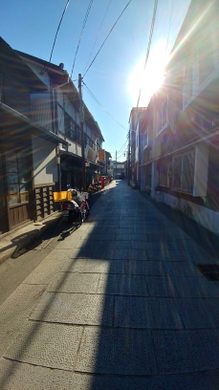AO Edited
Guryongpo Japanese House Street
Originally built by Japanese fishermen, this historic neighborhood has withstood the test of time.
Legend has it that, during the reign of King Jinheung of Silla, the county magistrate of today’s Guryongpo witnessed an extraordinary sight: ten dragons soared skyward as a sudden storm raged, and a bolt of lightning hit one of them, causing it to fall into the sea. This somehow calmed the storm and the county was later named Guryongpo, meaning Nine Dragons’ Beach.
Located on the near-easternmost point of Korea facing the Sea of Japan, this eup (town) became home to Japanese immigrants around 1906. Most of them were fishermen from the village of Oda in Kagawa, who were seeking new fishing grounds as the Seto Inland Sea grew fraught with rivalries between locals. For them, Guryongpo was quite an ideal location, since it was so abundant in fish that boats would topple over under the weight of massive hauls.
By the 1930’s, 10,000 Japanese people had moved to Guryongpo-eup, creating a moderate-sized Japantown around the houses of Togawa Yasaburo and Hashimoto Zengichi. Hashimoto’s former house has been renovated and stands today as the Guryongpo Modern History Museum.
The town’s flourishment, however, was not all fun and games (especially in retrospect). Its heyday came right after the Empire of Japan’s occupation of Korea in 1910, which heavily exploited its people. Although the colonial rule itself ended along with World War II, its repercussions persist to this day.
The Japanese immigrants returned to their country after the war, but their houses were kept intact in spite of the nationwide movement to remove imperial influence from the country, preserving the Japantown of old. In the meantime, the fishing in Guryongpo remained as plentiful as ever until the end of the 20th century, when its population started to decrease.
To give a new boost to the economy of the region, the city started to renovate the old neighborhood in the early 2010’s as a tourist attraction called the “Guryongpo Japanese House Street.” It’s almost like a piece of Showa-era Japan thrown into modern South Korea, an intriguing time capsule that has come through the shadows of colonialism.
Plan Your Trip
The Atlas Obscura Podcast is Back!



















Follow us on Twitter to get the latest on the world's hidden wonders.
Like us on Facebook to get the latest on the world's hidden wonders.
Follow us on Twitter Like us on Facebook